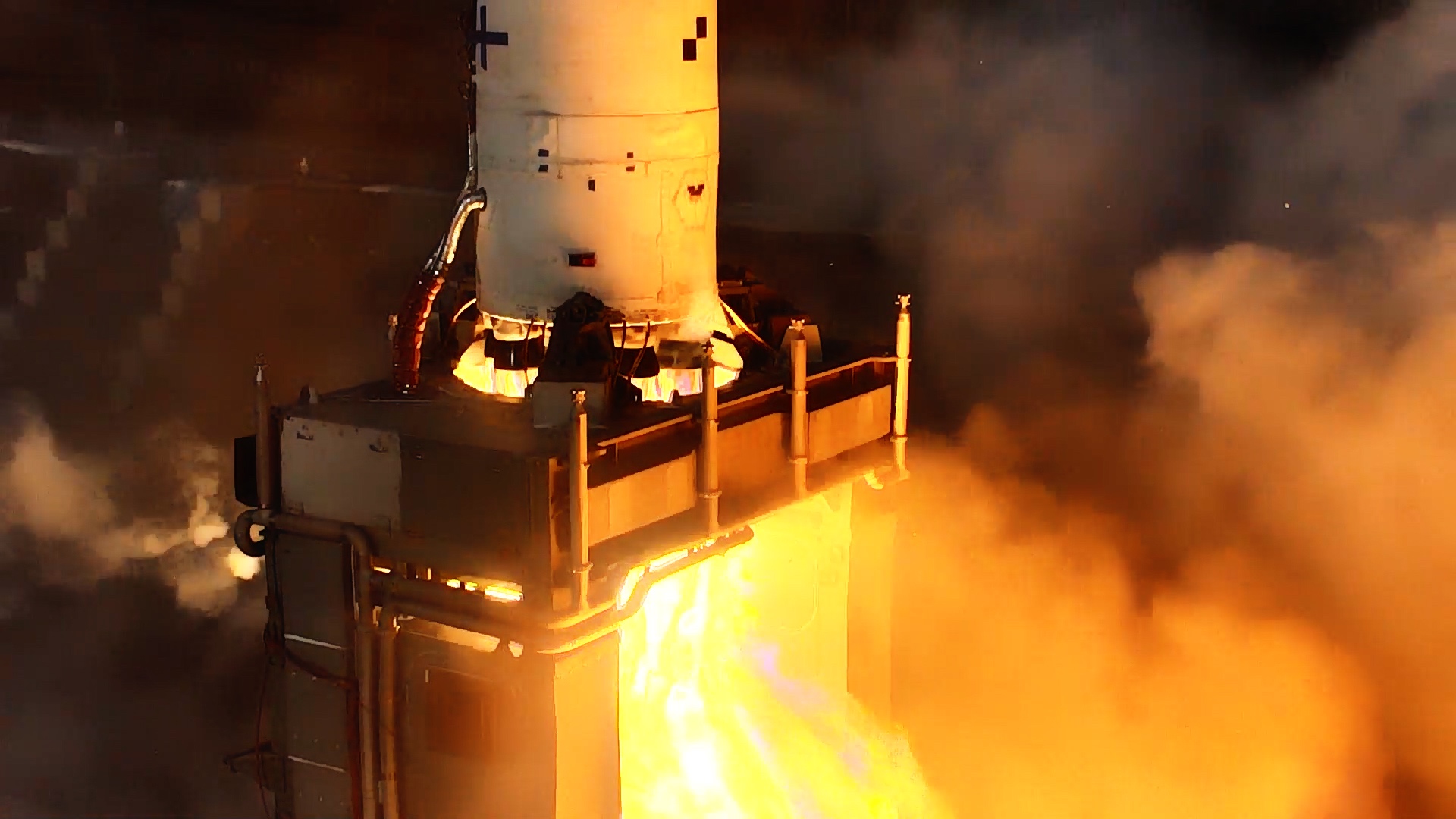Products You May Like
WASHINGTON — ABL Space Systems said it lost its second RS1 rocket after a static-fire test when a fire broke out under the vehicle fed by leaking fuel that could not be extinguished by pad systems.
The company released Aug. 26 details about the July 19 incident that led to the loss of the vehicle during one of the final tests before the vehicle’s second launch at Pacific Space Complex – Alaska on Kodiak Island.
In a statement, ABL Space Systems said it ignited the E2 engines in the first stage of the RS1 rocket in the test, but aborted the test after just half a second because of a low pressure reading in one engine that the company said was caused by a faulty pressure sensor.
The engines shut down, but a fire then broke out under the base of the vehicle, fed by fuel leaks from two engines. That fire was contained but could not be extinguished by either water or inert gas systems, and the company started offloading kerosene and liquid oxygen propellants from the vehicle.
The launch pad the company uses at Kodiak does not have its own water supply, with the company instead using mobile tanks that ran out of water 11 and a half minutes after ignition. That caused the fire to spread “and a progressive loss of pad systems,” the company stated, including the inability to continue detanking the rocket and eventually telemetry from the rocket.
“At T+ 23:24, the fire exceeded the thermal capability of the structure and RS1 buckled to the pad,” the company stated. That damaged a “majority” of electrical and plumbing connections on the launch mount, although the structure of the launch mount itself and other ground support equipment survived.
An investigation of the two engines that had the fuel leaks that fed the fire showed “significant erosion” of their propellant injectors and liners that the company said is a sign of failure linked to combustion instability. “Our current leading theory is that differences in the Block 2 Stage 1 propellant feed system led to a higher energy startup than on the test stand, triggering an instability in 2 of 11 engines,” it stated.
ABL added that in more than 300 tests of the E2 engine, it had seen that phenomenon only once, which it attributed to a different issue. The company added, though, that it had little experience with this specific configuration and was starting a series of tests at its Mojave Air and Space Port test site in California to see if that explanation is correct and to look for other potential causes.
The company did not offer a timeline for completing that work or for attempting another launch. ABL said it is returning the ground support equipment to Long Beach, California, for repairs while the next RS1 rocket is “well into production.”
The pad fire took place a little more than 18 months after ABL’s first launch of the RS1. That vehicle lost power 10 seconds after liftoff and crashed back at the launch pad. The company later concluded that the design of the launch mount contributed to a fire in the rocket’s engine compartment that led to the loss of power, and redesigned the mount.
The vehicle destroyed in the July fire was a revised Block 2 version of the RS1. It features 20% higher thrust and 20% more propellant, and the addition of two engines to the original nine-engine first stage.
